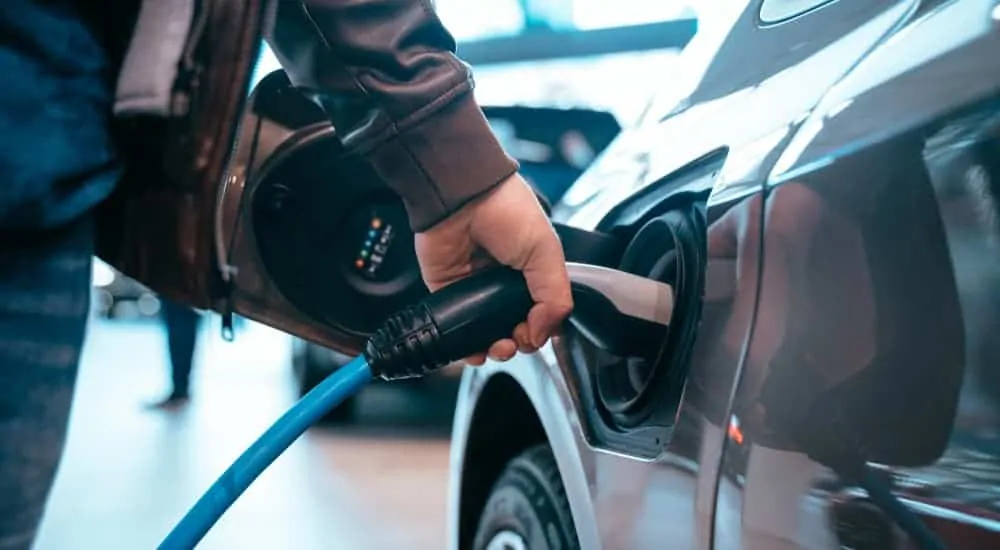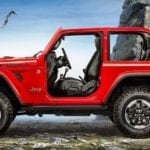As our awareness of our carbon footprint increases, alongside the knowledge of the impact things like emissions, fossil fuel usage, and manufacturing pollution, corporations who wish to remain ahead of the curve look towards practical solutions to make their products more environmentally-friendly. Naturally, there are a few products, especially within the automotive industry, that seem impossible to eco-fit; therefore, many heads turned when Fiat Chrysler Automobiles announced their plans to create a full line of hybrid electric Jeep models.
While the concept of an electric Jeep was introduced in March of 2019 at the Geneva Auto Show, seeing is believing, as the saying goes. With a new commitment to electrify the entire Jeep lineup by 2022, it seems that FCA has a very ambitious and aggressive plan in mind in order to make Jeep a more eco-friendly model. Still, critics wonder how the manufacturer can make a traditionally rugged, off-road vehicle more environmentally conscious, without losing the power required to travel those perilous trails and muddy off-roads. The debut of the electric plug-in Wrangler at the 2020 Consumer Electronics Show in Las Vegas has answered some questions about the future of Jeep, but raises many more, as fans and critics alike wonder how FCA will pull off this seemingly impossible mission.
An Ambitious Goal
The first mutterings regarding electric Jeep models became public in December of 2019 when Fiat Chrysler Automobiles Global President Christian Meunier confirmed the plans. “We’re going to really accelerate the electrification of the Jeep,” he stated in an article reported by carsguide.com.au. “We’re going to do that very, very quickly.” He confirmed the 2022 deadline for electrifying all of Jeep’s SUVs, and added, “The mission is: greenest SUV brand in the world… but also the most capable and the most fun to drive off-road and on-road.”

A Quest for More Information
For many, this comes as only a moderate surprise. After all, the Jeep Wrangler is currently available with the eTorque “mild” hybrid system, the introduction of which seemed to portend things to come in hybrid engineering. eTorque technology, which is currently an option for Jeep Wrangler and Ram 1500 drivers, replaces the alternator with a 48V generator that captures and stores braking energy, which it then re-directs into low-speed energy boosts.
The conversion to full electric, however, has a few steps along the way. Many drivers are familiar with hybrid electric vehicles, or HEVs, which capture energy from braking, and use this regenerative power unless the gasoline engine is required for bursts of speed and power. Plug-in hybrid electric vehicles, also known as PHEVs, are based on a combination engine that provides drivers with a certain range of all-electric driving before a traditional gas-and-oil engine takes over. Battery electric vehicles, or BEVs, have no engine and store energy in high-capacity battery cells.
The question for Jeep owners, therefore, is what type of vehicle FCA plans to pursue. While PHEVs and BEVs are practical for city living, where they can be charged at home or at charging stations on the road, how does this translate into the typical “Jeep Life.” Many Wrangler drivers, for example, cherish their off-road time, but what happens if a PHEV Jeep loses charge on the trail? While Mr. Menuier promises vehicles that are faster and more fun, is it really practical to have an electric car in the mud, the desert, or the mountains?
Additionally, while we do know that the models dubbed “4xe” will be trail-rated, given the name, it’s hard to imagine how. The Compass and Renegade were displayed with a 1.3L turbocharged engine and a 240 horsepower, 31-mile electric motor. But will that be enough to get Jeep fans where they want to be? The word on the Jeep forums is that the 4xe will be built around a 3.6L or 2.0L gas engine, which is currently available, or even the Pentastar 3.6L engine that has excited the off-road community recently.
Renegade, Compass, and Wrangler Start the Trend
The PHEV versions of Renegade and Compass made their debut at the March 2019 Geneva Motor Show. Currently, these models are only available to the European market. These vehicles featured the aforementioned 1.3L engine powering the front wheels, while the rear wheels were powered by a separate electric motor. It’s possible that Jeep will use this popular approach to building future 4WD vehicles on the hybrid platform.
The plug-in Jeep Wrangler debuted at the Consumer Electronics Show in Las Vegas, Nevada, in January 2020. Naturally, this electric 4xe was center-stage at FCA’s booth, and garnered a great deal of attention.
The CES is a premier consumer electronics trade show, and has been held every year since 1967. Organized by the Consumer Technology Association, this show is specifically held to showcase the newest inventions, innovations, and technologically re-imagined products that can greatly benefit the lives of the modern consumer. In recent years, the theme has centered around environmental consciousness and reduction of our carbon footprint; therefore, the electric Jeep Wrangler became an instant sensation.
Early Hints Become Facts
There have been some lingering hints that hybrid Jeeps were on the horizon. In 2017, FCA CEO Mike Manley made a promise that an electric Wrangler was a possibility; however, many Jeep fans thought that was a reference to the eTorque model that is currently available.
When the Detroit FCA assembly plant was formally announced in 2019, Jeep made it clear that these plants would be capable of producing both PHEV and BEV versions of Jeeps in the future. At the time, however, no one knew how soon that future would be. Given the aggressive plan set forth by Meunier, it seems those capabilities are already in motion.
Detroit 2 and Warren Truck Assembly Plants will be responsible for installation and assembly of hybrid Grand Cherokee, Wagoneer, and Grand Wagoneer, which are estimated to be released as early as 2021. Over $160 million has been invested by FCA in their Toledo North Assembly Plant, as workers prepare for the PHEV Wrangler and Gladiator.
It is expected that details will become available quickly once these plans are set in motion, as 2021 vehicles will be unveiled in Summer 2020. With only two years for Jeep to fully realize an electric line, many speculate that the process will be more gradual than Meunier’s statements seem to indicate. Rather than jumping into a full BEV, some fans believe a middle-ground hybrid will launch first.
While the plan to electrify all Jeep models may raise plenty of questions for fans of the sport-utility brand, it’s easy to find these efforts commendable as concern for the planet grows. The details learned at CES 2020 are somewhat enlightening, but true Jeep fans are excited to see what the 2020 Geneva Motor Show brings, as far as additional details that might clarify how off-roaders will charge their beloved 4xe vehicles, and whether towing will still be possible with an electric-powered vehicle. The planet may welcome a low-to-no emission Jeep lineup; however, fans and critics alike have some thoughts and questions that will need to be addressed before these vehicles hit the roads and lots in 2022. One thing is for sure—information will be forthcoming throughout 2020 as plans and engineering details are solidified. CES 2020 was just the beginning.



